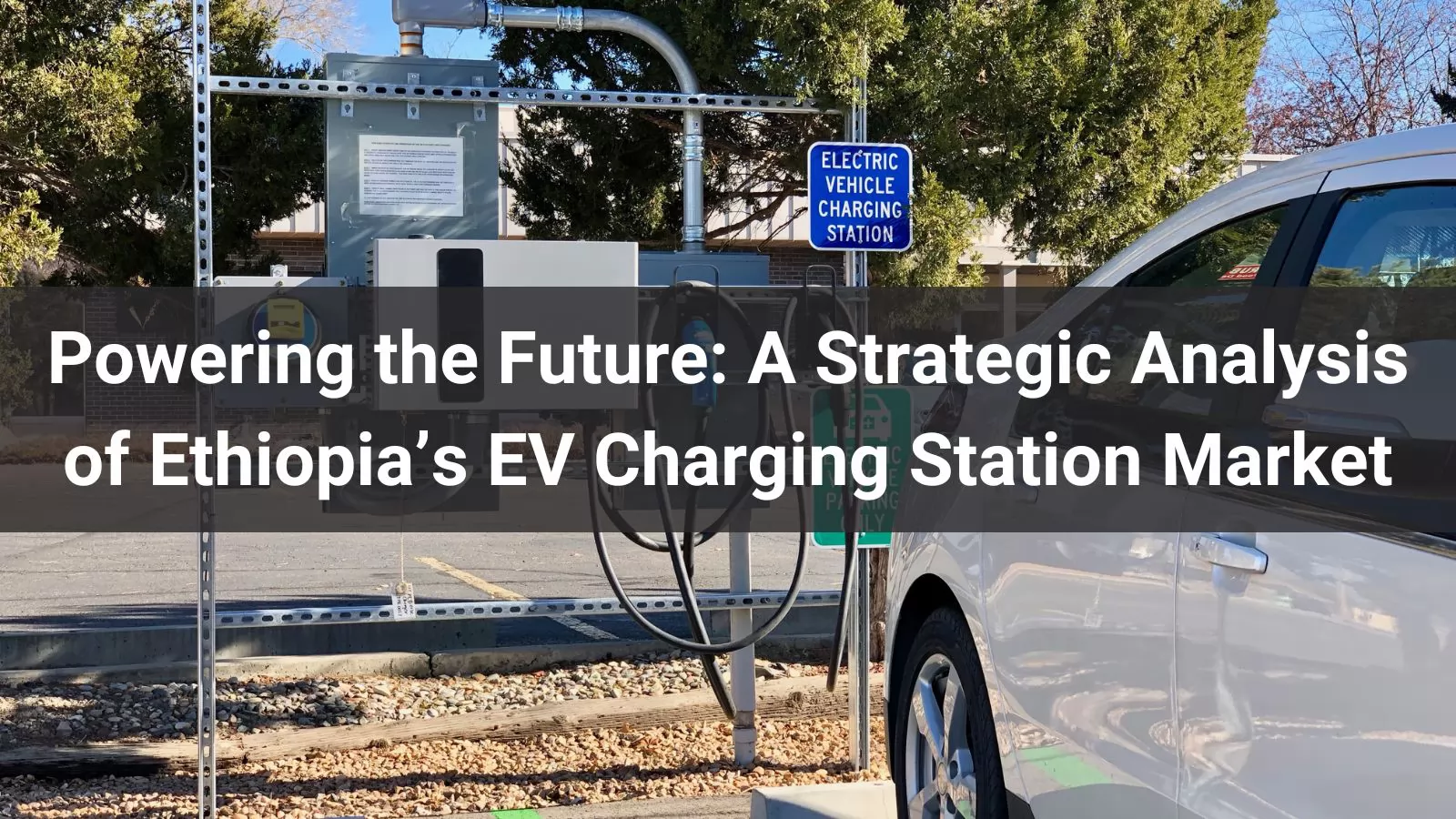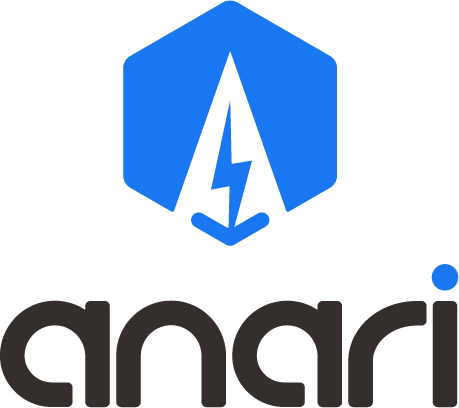
Executive Summary
Ethiopia is taking tentative yet strategic steps towards establishing a sustainable electric mobility (e-mobility) ecosystem, led by governmental policies targeting environmental sustainability, import substitution, and energy security. While the current EV charging infrastructure remains underdeveloped, market fundamentals—including abundant renewable energy potential, rapid urbanization, and rising fuel import costs—are catalyzing public and private interest in electric vehicles (EVs) and their supporting infrastructure. This report provides a comprehensive analysis of the EV charging station sector in Ethiopia, covering national policies, market size, development stage, competitive landscape, emerging opportunities, and persistent challenges. Although the market remains nascent, the policy momentum, utility-scale power availability, and private sector enthusiasm position Ethiopia as a promising frontier market for early investment in EV charging infrastructure.
1. National Policy Landscape
1.1 Government Vision and Decarbonization Strategy
Ethiopia's Climate-Resilient Green Economy (CRGE) Strategy, launched in 2011, outlines a pathway to carbon-neutral growth by 2030. The transport sector is explicitly targeted due to its increasing share of fossil fuel imports and urban air pollution. Electric mobility—including EVs and electric buses—is seen as a central pillar of this low-carbon development.
1.2 Key Legislative Instruments
-
10-Year Transport Sector Development Plan (2021–2030): Promotes vehicle electrification through import tax exemptions, fuel savings programs, and investment in public charging infrastructure.
-
Electric Vehicle Policy Draft (2023): Introduces structured incentives for EV importation and mandates collaboration between government ministries, Ethiopian Electric Utility (EEU), and city administrations to deploy charging infrastructure.
-
Customs and Tax Reform (2020-2022): Electric vehicles, especially buses and two- or three-wheelers, now enjoy reduced or zero import duties and VAT exemptions.
1.3 Institutional Players
-
Ministry of Transport and Logistics (MoTL): Leads EV-related policymaking and regulatory oversight.
-
Ethiopian Investment Commission (EIC): Facilitates foreign and local investments in the e-mobility sector, offering incentives in industrial parks.
-
Ethiopian Electric Utility (EEU): Tasked with supplying stable grid connections to charging stations.
-
Addis Ababa City Administration: Pioneers localized EV infrastructure pilots with international development partners.
2. Market Size and Forecast
2.1 Vehicle Base and Electrification Trends
Ethiopia currently has a modest vehicle fleet of approximately 1.2 million units, the majority of which are aging internal combustion engine (ICE) vehicles. However, from 2021 to 2025, electric vehicle imports have grown by >40% CAGR, albeit from a low base. Most EVs are second-hand sedans and electric three-wheelers imported from China and India.
-
Estimated EVs on road (2025): ~5,000 units
-
Forecast EV fleet (2030): 100,000–150,000 units
-
EV penetration target (2030): 20% of new vehicle registrations
2.2 Charging Station Demand Forecast
Assuming a 1:20 charger-to-EV ratio for optimal urban service coverage:
-
Required chargers by 2030: 5,000–7,500
-
Potential addressable market size (2030): USD 100–150 million (hardware + installation + grid integration) This forecast is based on a mixed deployment of AC and DC chargers, skewed toward low-cost AC solutions for two- and three-wheelers.
3. Current Development Status
3.1 Charging Infrastructure Rollout
The existing charging network is highly fragmented and mostly pilot-based. Key installations include:
-
Public AC charging hubs in Addis Ababa, managed by the city government and EEU
-
Private depot chargers for electric minibuses and three-wheelers
-
Solar hybrid charging stations piloted with donor assistance (e.g., UNDP, GIZ)
As of Q2 2025:
-
Operational public charging stations: ~25
-
Private/fleet charging hubs: ~30–40
-
DC fast chargers: <10 (mainly for demonstration purposes)
3.2 Business Models in Use
-
CPO Model: Emerging, mostly small-scale operators using imported Chinese hardware.
-
Utility-Led Model: EEU-led deployment under grid-connected public projects.
-
Foreign Aid + NGO Support: Donor-backed installations in peri-urban and off-grid zones.
4. Competitive Landscape
4.1 Domestic Players
-
Ethio eMobility Solutions
-
Founded: 2022
-
Profile: Local EV charger distributor and installer
-
Products: 7–22 kW AC wallbox, mobile EV charging solutions
-
Focus: Urban residential and commercial charging solutions
-
Status: Installed >200 chargers in Addis Ababa by mid-2025
-
MOENCO (Toyota Ethiopia)
-
Profile: Authorized Toyota importer now distributing electric vehicles and charging infrastructure
-
Partnerships: Collaborates with BYD and Huawei for hardware supply
-
Strength: High brand trust and dealership network
-
Ethiopian Electric Utility (EEU)
-
Role: Grid access provider and infrastructure co-developer
-
Projects: Manages grid interconnection for pilot charging corridors
4.2 International Partnerships
-
BYD: Supplies electric buses for public transport pilots.
-
Huawei: Supplies DC charging hardware in partnership with EEU.
-
Anari Energy: As a leading EV charger supplier (Castor DC Series, Vulco DC Series, Aquila DC Series, DC Fast Charging Station and DC Charging Station; Sena AC Series, Tiber AC Series, Gaia AC Series)
4.3 Hardware Origin
-
~70% of installed charging hardware originates from China (e.g., StarCharge, Telge)
-
~20% from India
-
Remaining from EU-based SMEs (e.g., EFACEC)
5. Opportunities
5.1 Renewable Energy Abundance
Ethiopia generates ~90% of electricity from hydropower, with massive potential in solar and wind. This enables a carbon-neutral EV charging backbone with minimal marginal emissions—ideal for green investment branding.
5.2 Urbanization and Congestion Mitigation
Addis Ababa’s population is expected to exceed 7 million by 2030. Electric minibuses and ride-hailing EVs can reduce congestion and emissions, driving demand for strategically located fast-charging hubs.
5.3 Last-Mile Electrification
There is strong potential in deploying electric two- and three-wheelers for last-mile delivery (e.g., e-commerce, logistics, urban freight), requiring dense AC charging networks.
5.4 Industrial Parks and Logistics Hubs
Ethiopia’s 20+ industrial parks offer ideal deployment zones for captive charging stations servicing electric trucks and fleet vehicles. The Hawassa Industrial Park already hosts pilot EV programs.
5.5 Donor Funding and Green Finance
Multilateral organizations are investing in EV ecosystem development:
-
World Bank: Financing e-mobility studies and grid integration
-
African Development Bank: Offering lines of credit for green transport
-
GIZ: Piloting community e-mobility programs with solar charging
6. Challenges and Risks
6.1 Power Reliability and Load Management
Despite surplus generation, grid outages and voltage instability hamper reliable charging. Smart grid upgrades and battery-buffered charging systems are urgently needed.
6.2 Policy Fragmentation
Lack of harmonized standards, regulations, and licensing frameworks has created uncertainty for foreign investors. There are no nationally unified guidelines for:
-
EVSE (EV Supply Equipment) certification
-
Metering and billing regulation
-
Tariff structuring for commercial EV charging
6.3 High CapEx and Import Dependence
Import tariffs have been reduced for EVs but charging station components still face bottlenecks and costs. Few local manufacturers exist for enclosures, cables, or connectors.
6.4 Low Consumer Awareness
Widespread misconceptions about EV range, charging time, and maintenance persist. Without aggressive awareness campaigns, market adoption will remain slow.
6.5 Limited Financing Access
Local banks are not yet offering EV-specific loans or lease options. Startups in the CPO space struggle to raise working capital due to lack of proven business models.
7. Strategic Recommendations
For Policymakers:
-
Establish a national EVSE regulatory body to standardize certification and licensing.
-
Offer tariff incentives for off-peak EV charging to balance grid load.
-
Enable local content incentives for EVSE manufacturing to reduce forex pressure.
For Private Investors:
-
Focus on urban corridor deployment (e.g., Addis–Adama) with predictable demand patterns.
-
Leverage donor co-financing to de-risk early-stage investments.
-
Build smart charging solutions with data analytics and demand response capability.
For Development Partners:
-
Prioritize capacity building programs for local technicians and installers.
-
Support digital platforms for EV charging payment, location, and maintenance.
-
Facilitate cross-sectoral collaboration among ministries, utilities, and startups.
Conclusion
While Ethiopia’s EV charging infrastructure is still at an embryonic stage, the convergence of strong renewable energy assets, supportive (albeit evolving) policies, and rising urban mobility demands presents a compelling case for strategic early investment. The next five years will be critical in laying the foundation—both physical and institutional—for an inclusive, reliable, and green EV charging ecosystem. The winners in this frontier market will be those who act early, engage deeply with public-sector counterparts, and innovate with flexibility around Ethiopia’s unique urban, economic, and infrastructural constraints.
Read more:
10 Best DC Fast Chargers 2025
Top 10 EV Charging Companies in the World 2025
Top 10 DC EV Charger Companies in China 2025





